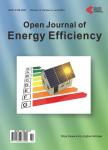Design and Modelling of Piezoelectric Road Energy Harvesting
Design and Modelling of Piezoelectric Road Energy Harvesting作者机构:College of Engineering The Pennsylvania State University Altoona USA
出 版 物:《Open Journal of Energy Efficiency》 (能源效率(英文))
年 卷 期:2022年第11卷第2期
页 面:24-36页
学科分类:0202[经济学-应用经济学] 02[经济学] 020205[经济学-产业经济学]
主 题:Energy Harvesting Piezoelectric Harvesters Road Pavement Device Modelling
摘 要:In recent years, road piezoelectric energy harvesting (RPEH) has attracted great attention from industry and academia, as it can provide power to traffic ancillary facilities and low-power wireless sensor devices to support car networking and intelligent transportation. The output power of RPEH in a recent research project demonstrated a watt level RPEH. In this proposal, we propose to harvest energy from piezoelectric modules (also called stacks) to power selected highways, tolls, and bridges in Pennsylvania. The project incorporates electrical, mechanical, and civil engineering works. The proposed smart highway RPEH will be conducted using optimization parameters to evaluate the system performance and trade-offs. MATLAB will be used with other optimization solvers in problem modeling and optimization. During this project, an RPEH hardware system will be constructed. The system will include a piezoelectric module, rectifier (AC-DC), Storage battery, data acquisition system (DAQ), and computer. The captured data will be analyzed using MATLAB/Simulink. The results show that optimum harvested parameters were addressed when the thickness is selected as 2 mm.



